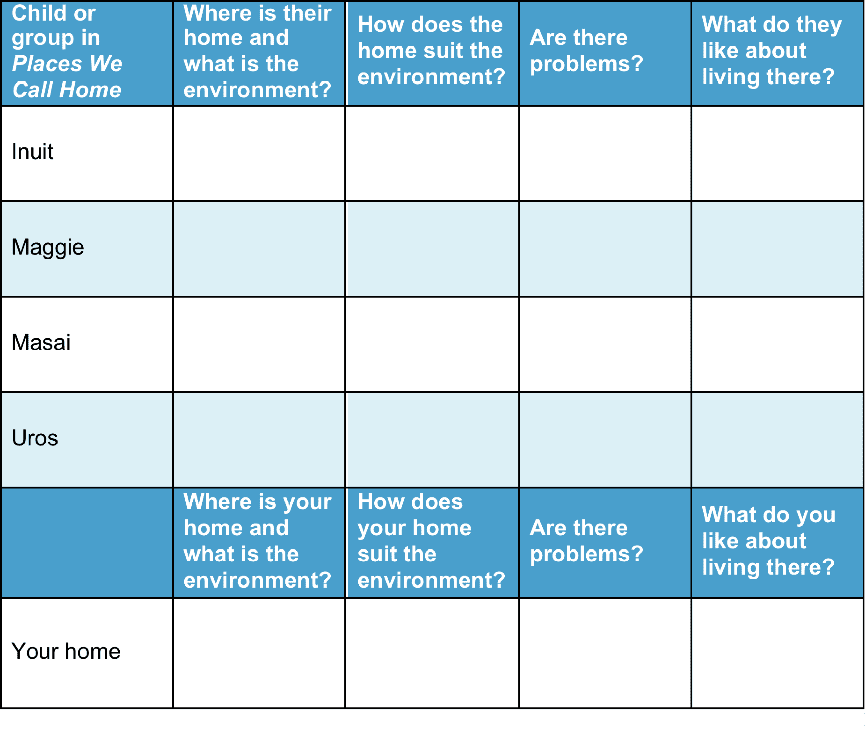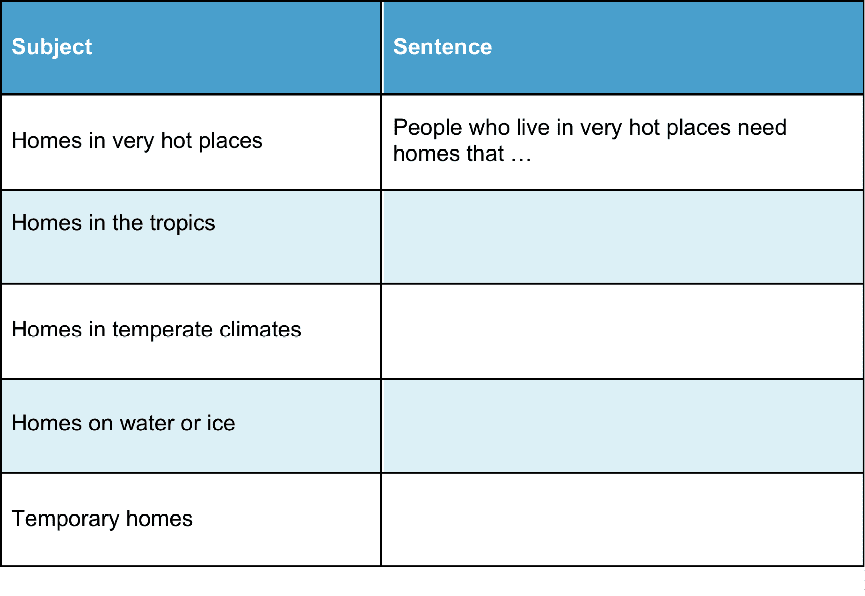Information for Teachers
Curriculum links
This investigation is linked to the following C3 Social Studies Standards for Grades 3–5.
D2.Geo.2.3–5. Use maps/ satellite images/photographs to explain relationships between locations of places and regions and their environmental characteristics.
D2.Geo.4.3–5. Describe how environmental and cultural characteristics influence population distribution in specific places or regions.
D2.Civ.6.3–5. Describe ways in which people benefit from and are challenged by working together, including through government, workplaces, voluntary organizations, and families.
How to search the internet
1 Keep your request short
Fewer words will give a more accurate search.
2 Choose exactly what you want
For example: Arctic Circle Climate
3 Use quotes
Double quotes around a set of words tell the search engine to consider those exact words in that exact order without any change. For example: “Arctic Circle Climate”
4 Use the plus sign (+)
If you add a plus sign (+) between words, the internet will search for all the words. For example: migrate+birds+whales+mammal
5 Use the minus sign (–) to say what you don’t want
Use a minus sign (–) to show words you do not want to appear in your results. For example: if you search for burrowing animals and do not want mammals in your search, –mammals will exclude mammals. Note that you need to put a space before the minus sign for the word to be excluded.
6 Be very clear about what you don’t want
Part 1
Ask questions and define problems
After reading Places We Call Home, you may have many questions about homes in very different places around the world.
List your questions
- Compare your list with questions that others have.
- Choose a question you would like to investigate.
- You can work alone, with a partner, or in a small group.
You may want to choose one or more of these questions to investigate
Q1. What are the important differences between the homes discussed in the book? What factors create these differences?
Q2. Does your home suit the climate and environment where you live? Which places in the book are most like your home?
Q3. Why so some people have to live in temporary homes?
Go to Part 2 Investigate →Part 2
Investigate
Helpful websites
You may want to use some websites to help with your investigations, depending on your questions. If it is about your home or those of others in your class, most of the information should come from you, your family, or classmates and their parents.
Go to Part 3 Record data →Part 3
Record data
Find a way of recording your information that will allow you to see any patterns in the data.
Data Chart for Places We Call Home
 Download Chart
Download Chart
Go to Part 4 Organize, analyze, and interpret data →
Part 4
Organize, analyze, and interpret data
1. Look over the information you have gathered and the patterns you have found.
What makes the homes different than each other? What makes them the same?
2. Search for other patterns.
3. Makes notes about what you find.
Go to Part 5 Present and share →Part 5
Present and share
Look over all of the information that you have gathered in your investigation.
What are the most important ideas about your topic?
Make a chart showing the most important ideas.
 Download Chart
Download Chart
← Return to menu